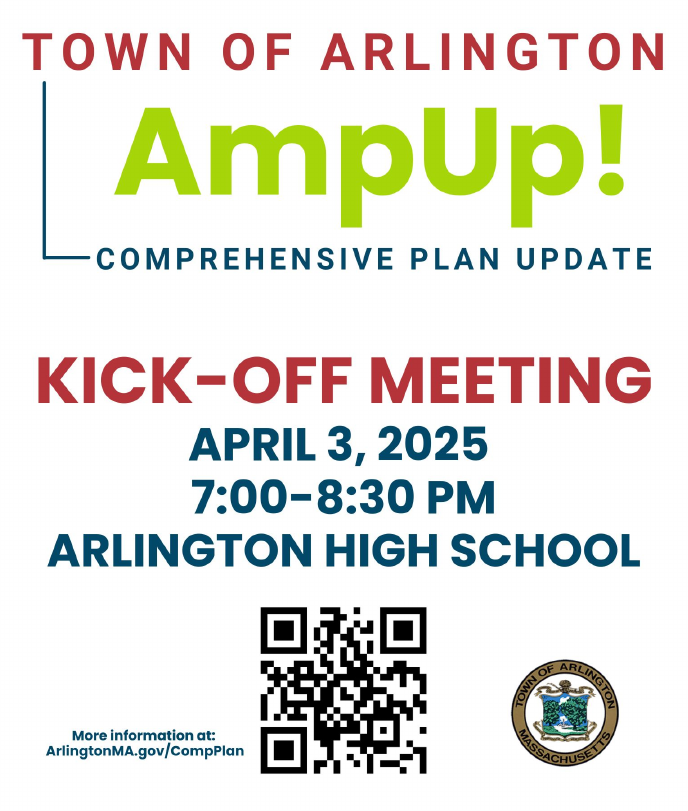Article 6 in a series on the Arlington, MA Master Planning process. Prepared by Barbara Thornton
Arlington residents value the town’s walkability, woodlands and water vistas and tree lined streets. It will require careful Town policy and citizen advocacy to preserve these valuable assets for the future. The Master Plan, now in draft form, assesses the challenges and makes recommendations for how to preserve and enhance the open space and natural resources the community now enjoys.
Open Space Held by Different Owners
Some facts to frame the situation: 41% of Arlington is covered with impervious surfaces, buildings, roads, etc., making it harder for water to drain into the ground. Additional area is covered by rocky ledge. Surface water covers Approximately 6% of the land area – two lakes, two ponds, one reservoir, one river and several brooks, and 15% of the town’s land area is publicly owned open space including conservation land, land in schools, parks and recreational uses and other town or state owned land. Arlington Conservation Commission (ACC) oversees and manages 25 land parcels with a combined total of 50 acres (see Table 7.2). Arlington also owns the 183 acre Great Meadows, ironically located entirely in Lexington. The state owns and Department of Conservation and Recreation (DCR) manages several parcels including the 120 acre Alewife Brook Reservation and the land along the Mystic River and around the Mystic Lakes dam. Areas designated as wetlands and floodplains also limit development and hold the community closer to the natural environment.
Concerns for Sustainability and Climate Change Adaption Guide Actions
The nine Vision 2020 goals the town adopted in the 1990’s anticipated a sustainable community. Volunteer and Town actions like the “Arlington Sustainability Action Plan” developed by the Vision 2020 Environment Task Group led to the Town hiring an energy coordinator, a recycling manager and the purchase of fuel-efficient vehicles. The “Safe Routes to School” initiative, the Minuteman Bikeway, the “complete streets” plan for Mass Ave in East Arlington, the “Tree City” designation, the recycling program, Hurd Field “rain gardens” and porous parking, are all examples of how citizen concerns and volunteer action have led to significant sustainability initiatives. These actions set the stage for Arlington’s designation by the Massachusetts Green Communities Program in 2010 as a “Green Community”.
Challenges Remain- How Will the Community Respond?
Protecting and preserving open space, water quality, urban wildlife, tree cover and managing environmental hazards continue to challenge Arlington citizens and officials. The Master Plan raises several questions for how the community might respond to these challenges.
- Should there be disincentives for the “teardown” of smaller and older homes that reduce open space or tree cover?
- Can mixed use development be encouraged in areas where infrastructure is already in place?
- What are the best opportunities for linking existing open space?
- Are there locations suitable for “urban agriculture”?
- How can Arlington residents support efforts to better maintain its trees, water bodies and passive recreation land?
Ideas discussed include a linear park along Mill Brook, improved access to shorelines along Spy Pond, Mystic Lake and Mill Brook, rooftop gardens, food growing in green strips between sidewalk and street, re-imagining uses to preserve open space at Poet’s Corner and the flood-prone Mugar property and, revising the zoning bylaw to allow “form based” zoning code in support of enhancing open space, improving streetscape, preserving tree, control flooding etc.
Key to the success of the past initiatives, and to the future, is Arlington’s tradition of informal and flexible support of the creative initiatives of the town’s citizens.
Arlington Advocate’s Master Plan series:
1: Arlington shows the way with master plan.
2: Arlington Master Plan: Choices for future land use
3: Traffic and transportation issues shape Arlington’s future
4: Arlington Master Plan considers economic development
5: Housing choices shape future affordability, vitality
